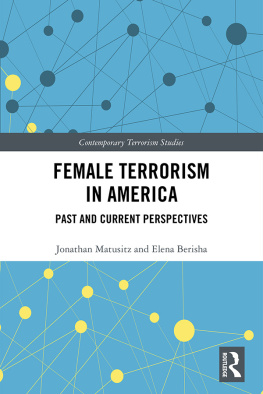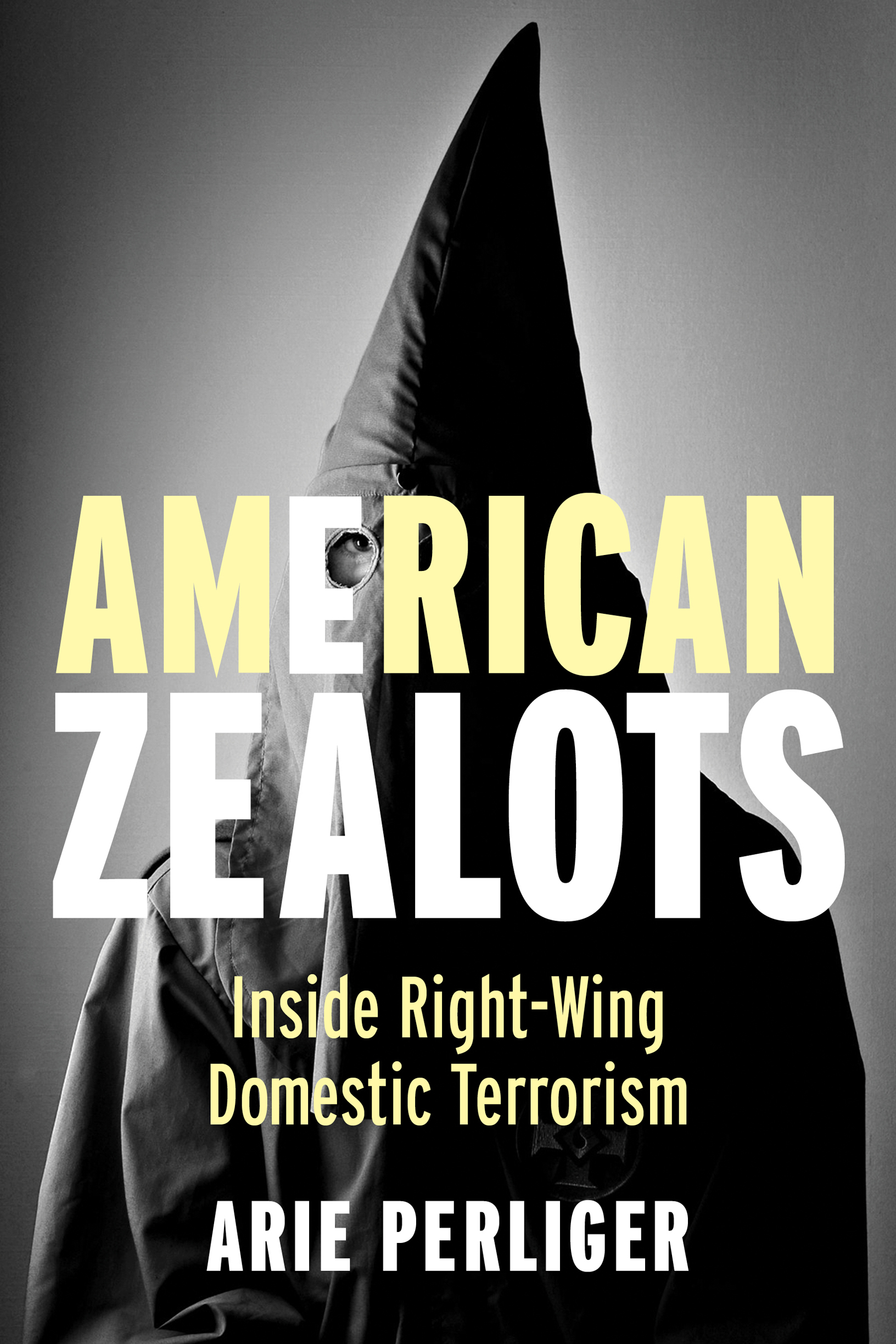Names: Perliger, Arie, author.
Title: American zealots : inside right-wing domestic terrorism / Arie Perliger.
Description: New York : Columbia University Press, 2020. | Series: Columbia studies in terrorism and irregular warfare | Includes bibliographical references and index.
Identifiers: LCCN 2019059874 (print) | LCCN 2019059875 (ebook) | ISBN 9780231167109 (hardback) | ISBN 9780231167116 (paperback)
Subjects: LCSH: Domestic terrorismUnited States. | TerrorismPolitical aspectsUnited States. | Right and left (Political science)United States.
Classification: LCC HV6432 .P4725 2020 (print) | LCC HV6432 (ebook) | DDC 363.3250973dc23
A Columbia University Press E-book.
CUP would be pleased to hear about your reading experience with this e-book at .
Cover image: Davis S. Holloway / Reportage Archive / Getty Images
The journey that culminated in the publication of this book began almost a decade ago, when I started my collection of data on far-right violence in the United States. In the early 2010s, the threat from the far right seemed to many to be secondary to other, more imminent terrorist threats. Some even contended that there was no such a threat at all. Others provided important encouragement, support, and assistance for my project. Hence, it is a pleasure to have the opportunity to thank those with whom I have had the privilege to discuss the nature of the violent American far right and learn from their experience and knowledge.
The initial stages of the data collection and analysis were supported by the Combating Terrorism Center (CTC) and the Department of Social Sciences at West Point. I would like to thank Nelly Lahoud, Gabriel Kohler-Derrick, Liam Collins, Cindy Jebb, Daniel Milton, and my other colleagues at the CTC for their ongoing support, even when the CTC was under fire for allowing me to study domestic terrorism. My immense gratitude also goes to my research assistants over the years: Limor Yungman, Matthew Sweeney, Matthew Wolfenden, Matthew Fabels, and Victoria Gouveia, whose help with building the far-right attacks dataset was critical to this book.
I owe a great debt to those colleagues who spent considerable time and effort reading and commenting on drafts of this study; their critical assessments were invaluable. My gratitude goes to the anonymous reviewers who provided constructive feedback and to Eitan Alimi and Leonard Weinberg, who reviewed earlier versions of the text. I have also benefited from my conversations with dear colleagues who provided important insights during my work on this project, including Assaf Moghadam, James Forest, Mia Bloom, Victor Asal, and Brinton Milward.
Throughout my academic career, I have enjoyed the support of two generous mentors and friends: Ami Pedahzur and Bruce Hoffman. I would like to thank them for all their support. I would not be the same scholar without them.
I would also like to thank the dedicated team at Columbia University Press. Im grateful for their patience and support while the book was being written. Caelyn Cobb and Michael Haskell were instrumental in leading this project to publication, and Robert Fellmans meticulous editing greatly enhanced the quality of the text.
Lastly, but most importantly, I would like to thank Lilya Perliger for being an incredible and supportive partner all these years and for inspiring me to become better, both academically and as a human being.
This book is dedicated to my mom, Elsa Perliger, and my children, Naama, Yotam, and Eithan, who I hope can live in a world with less hatred.
Why Study the Violent Far Right?
In the morning hours of August 5, 2012, the Sikh temple in Oak Creek, Wisconsin, was crowded, filled mostly with children and young mothers engaged in preparations for the Langar, a traditional Sikh communal meal that was to be held later that day. Paramjit Kaur was one of them. While her kids were already grown (her youngest was eighteen years old), she did not want to miss the opportunity to join her community and help in the preparations. Around 10 a.m., while Paramjit was praying with her sister inside the temple, they both suddenly heard gunshots. Paramjit and her sister stood, hoping to find a safe place to hide, and a bullet hit Paramjit in the back, inflicting fatal injuries.
The shooter was Wade Michael Page, a forty-year-old man from the nearby town of Cudahy, Wisconsin, who, upon his arrival at the temple, started firing at its inhabitants using his Springfield XD(M) 9-millimeter automatic pistol, which he had purchased several days earlier. During his shooting spree, he killed Paramjit and five male worshipers. When, around 10:25 a.m., the first police officers arrived and engaged with Wade, he was able to return fire and injure one of them before being shot in the stomach. He then aimed his pistol at his head and committed suicide.
The subsequent investigation by law enforcement linked Page to various far-right associations, mainly from the skinhead subculture and the white power music scene. Pages life story reflects that he was not a conventional lone wolf but a representative of a broad and influential subculture that spans various facets of American society.
Just a few weeks after the attack in Oak Creek, in an unrelated incident, law enforcement discovered that several soldiers from Fort Stewart, a military base in Georgia, were part of a militia that had been involved in the killing of at least two people and was actively stockpiling weapons and explosives to give the government back to the people.
During the final days of summer 2012, I was closely following these events. Beyond my long-term professional interest in political violence, I was in the final stages of a two-year study that sought to decipher the current landscape of far-right violence in the United States. Whereas most of the information on these events was made public at an infuriatingly slow pace, as is usually the case when law enforcement agencies are reluctant to release information before the completion of a criminal investigation, media outlets and policy makers wasted no time in warning us about another wave of far-right violence, expressing various opinions and ideas regarding the root causes and nature of this phenomenon. Many such discussions also reflected and promulgated common misconceptions and fallacies that dominate the popular discourse about the American violent far right, such as an inability to distinguish among its various components, a lack of understanding of its ideological tenets, and the tendency to ignore that the violent far right had always been present in American society. If anything, the level of far-right violence had been rising steadily for the last two decades.










